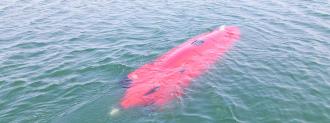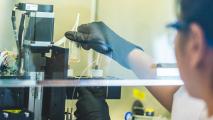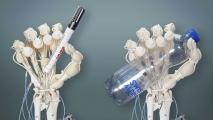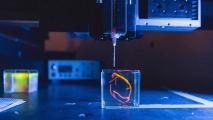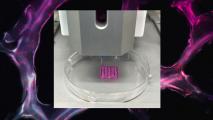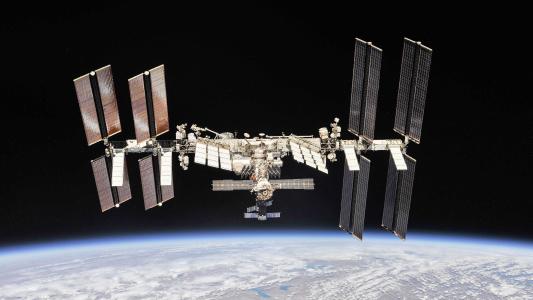A new 3D-printed submarine from Dive Technologies may be a window into the future of underwater drones.
Made without the costly and colossal components needed for more traditional methods, the 3D-printed sub, dubbed DIVE-LD, could be the prototype for a next generation of larger autonomous underwater vehicles (AUVs), Popular Mechanics’ David Hambling reports.
“We had to completely rethink manufacturing,” Dive Technologies CTO Bill Lebo told Hambling.
Drones Ahoy!
AUVs are rapidly changing the face of ocean exploration, industry, and warfare.
Capable of performing complex tasks on their lonesome and never getting tired, seasick, or needing to shelter in rough weather, AUVs are already revolutionizing archeology, discovering shipwrecks like the USS Nevada. They’re also providing scientists and the energy industry with cheaper, more efficient platforms for operating in one of the harshest, most dangerous environments on Earth.
Experienced researchers and explorers I’ve interviewed say they wouldn’t even begin projects now without an AUV laying some of the groundwork.
And of course, any seaborne technology so promising is going to be involved with the Navy.
A 3D-printed submarine was a logical next step, one the Navy took in 2017. Partnering with the Oak Ridge National Laboratory in notably landlocked Tennessee, the Navy printed a submarine hull that was reportedly 90% cheaper than those constructed with traditional methods and was made in mere days.
From Design to Dive: The 3D-Printed Submarine
That was just a hull, however; DIVE-LD is a full-fledged, autonomous 3D-printed submarine, and the construction techniques being pioneered by Dive Technologies could be leading the (depth) charge.
“Using large scale 3D printers, the Boston-based startup can slash costs, speed up production, and create any submarine imaginable in just a few weeks — from idea to fully-functioning prototype,” Popular Mechanics’ Hambling writes.
The key is skipping the costly, gigantic component known as a pressure vessel.
Submarines operate under immense pressures. To keep the sub and its squishy passengers from being crushed like a Twinkie under a watermelon, the submarine needs a stout steel inner hull to protect against the ocean’s relentless weight, known as the pressure vessel.
But there’s a way to skip this step. You just gotta cut out the middleman. Or crew, in this case.
Because there’s no one inside the autonomous DIVE-LD, the sub can allow itself to be flooded until the pressure inside its hull matches the pressure outside. This means that they can build around a skeleton, rather than an expensive and critical airtight piece of construction, and only need to ensure their AI systems and motors are protected from the depths.
After the AUV systems are mounted in the DIVE-LD’s skeleton, the exterior skin is put on and finished, and you’ve got yourself a 3D-printed submarine.
“We went from an inventory of parts to a fully integrated AUV in three days, complete with a low-drag 3D printed skin,” Dive director of R&D Tim Raymond told Hambling.
“Seeing the DIVE-LD come together so quickly and cleanly without any major speed bumps gave us an unexpected ‘ah-ha!’ moment.”
A Faster, More Versatile 3D-Submarine Future
Compared to, say, a Virginia-class nuclear attack sub like the USS Indiana, which began construction in 2012 and was delivered to the Navy in 2018, most underwater drones will be built relatively quickly, of course. (They also won’t be nuclear powered or nearly as fearsome.)
Even by those standards, DIVE-LD’s speed from design to dive is pretty damn quick.
As AUVs take on larger roles in our relationship with the seas, speed and flexibility will be prized.
Boeing/Lockheed’s Orca XLUUV took five years to hit the water, Hambling writes. By contrast, DIVE-LD’s detailed designing began in 2019, its electronics were wrapped by August 2020, the whole thing got put together in four days, and it finished sea testing in October.
But it’s the flexibility of Dive’s process that holds the most potential. If you want a different size hull, that requires different machine tooling, something that’s no small feat — it’s why car factories can’t just throw a switch to start making ventilators.
But because of the speed and cost-effectiveness of 3D printing, Dive could whip up just about any 3D-printed submarine design much quicker than traditional methods; as AUVs take on larger roles in our relationship with the seas, speed and flexibility will be prized.
“It didn’t matter what the vehicle actually looked like; we had the manufacturing process and architecture to rapidly create AUVs to meet any mission,” Raymond said.
